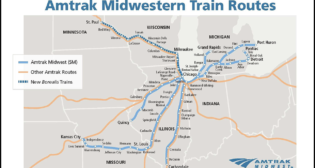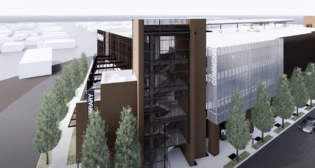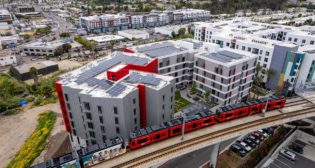
Study: NYCT No. 7 Line to New Jersey feasible
Written by Douglas John BowenCountering a blanket dismissal one year ago from the then-chair of the Metropolitan Transportation Authority, a 61-page study prepared for the City of New York asserts a No. 7 subway line extension under the Hudson River, linking Manhattan with New Jersey points, is worth pursuing.
“The No. 7 Secaucus Extension Feasibility Analysis Final Report,” conducted by Parsons Brinckerhoff, states in part: “The extension of the No. 7 Subway would result in the first trans-Hudson tunnel connection that would provide direct rail access from New Jersey, not only to the West Side of Manhattan, but also to the East Side and multiple locations in Queens. It would provide needed capacity across the Hudson River and advance the broader goal of enhancing regional connectivity.”
New York Mayor Michael Bloomberg, a proponent of a No. 7 extension, said in a statement Wednesday, “The lack of new transit investment is creating a serious and urgent threat to New York City’s economic competitiveness. Extending the 7 train to Secaucus is a promising potential solution – it would leverage existing investments and be compatible with other proposed projects – and is deserving of serious consideration.”
Construction is ongoing for extending the No. 7 from its current western terminus, at Times Square, to 34th Street and 11th Avenue, on Manhattan’s West Side (shown in photo above).
The study was posted Tuesday on the New York City Economic Development Corp. (NYCEDC) website.
“A conceptual alignment was developed providing a connection from the No. 7 terminal station currently under construction at West 34th Street and 11th Avenue to new tunnels under the Hudson River and the Palisades . . . to a new terminal station” at Secaucus Junction, N.J., on the Northeast Corridor, served by Amtrak and New Jersey Transit trains, the study notes.
Supporters of the extension note an extended No. 7 would link multiple travel destinations, including the Javits Convention Center, Times Square, and Grand Central Terminal, all in Manhattan, as well as Citi Field in Queens, home of Major League Baseball’s New York Mets.
New Jersey supporters of the plan, including the New Jersey Association of Railroad Passengers (NJ-ARP), point to the line’s potential as an alternative to severe and growing bus congestion on the nearby Lincoln Tunnel Express Bus Lane (XBL).
“This connection will allow passengers coming from New Jersey to make a user-friendly connection to reach the east side of Midtown Manhattan, particularly the Grand Central area and all along 42nd Street,” NJ-ARP Vice President Jack May told Railway Age.
“It will be especially advantageous to passengers from Bergen County, who now have to change twice to reach this important employment area of the city if they travel by rail,” May said.
In terms of travel time competitiveness, the study notes, among other examples, “Combined eastbound and westbound average running time between Secaucus and Grand Central was” 16 minutes, 11 seconds – clearly competitive with comparable trans-Hudson bus travel between the same two points, and far superior to current combined rail/subway options currently available via New York-Penn Station.
Funding sources, contentious on both sides of the Hudson, are avoided in the current report, which states simply, “Should the parties agree to proceed, the capital costs will be developed in the next stage of analysis. A refined engineering design and assumptions, construction schedule, determination of the midpoint of construction, escalation, and risk factors are required to develop such costs.”
Besides the MTA, the study group involved included representatives from the Governor’s offices of New York and New Jersey, Mayor’s Office of the City of New York, the Port Authority of New York & New Jersey, NJ Transit, Hudson Yards Development Corp., the New York City Department of City Planning, the New York City Department of Transportation, and the New Jersey Department of Transportation.



